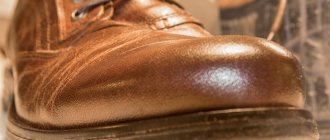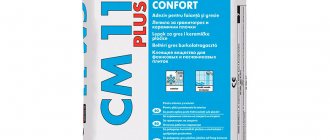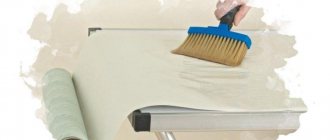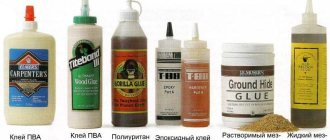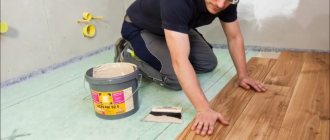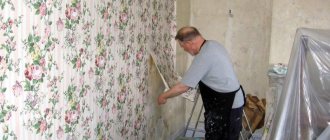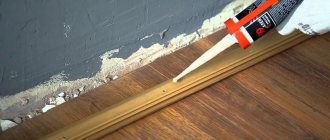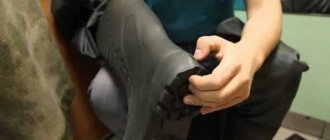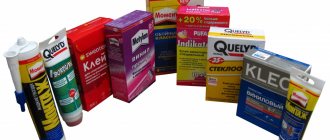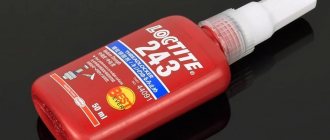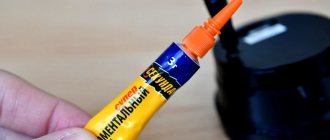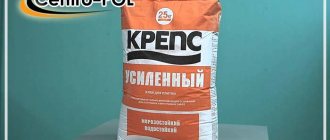Deformation and damage to shoes is a common occurrence. This may be due to both natural “wear and tear” and unfavorable weather conditions (snow, rain, temperature changes). Often, it is the sole that suffers. It peels off, causing the seal to be lost. However, before you run to the store for a new pair, you can try to fix the defect yourself at home. A special glue comes to the rescue.
Photo: Pixabay.com
The qualitative composition of such products should have a number of characteristics.
Among the main ones:
- Durable grip.
- No deformation of shoes at the joints.
- Long lasting effect.
- Elasticity of seams.
- Resistant to moisture and frost.
To begin with, it is worth noting that shoe adhesives, depending on the basis of the formula, are conventionally divided into the following types:
- Rubber.
Its purpose is auxiliary work. For example, using such means you can connect parts of textiles, insoles, and other elements. Here it is worth considering poor resistance to moisture and low temperatures. Therefore, rubber glue is only good for summer open shoes. - Polychloroprene.
It is used to “adhere” rubber soles, felt and leather insoles. It is resistant to moisture and frost. The only downside is that it is not suitable for polyurethane. - Polyvinyl chloride
- based on adhesive resins. Good for seams and toes. - Polyurethane.
It is considered very durable, fixed “tightly”. However, it is worth considering that the volume will increase after complete drying. Ideal for gluing soles to textiles or leather. It is important to be careful when working, because residues of the composition are difficult to remove from the surface. - “Instant”,
or - universal. Suitable for minor repairs. It has a convenient release form, and even a beginner can handle it.
As a rule, all packages of specialized glue are marked “For shoes.”
We present the rating of shoe adhesives 2022. The best 11 products that were selected by our experts based on user reviews and ratings.
| Rating (2021) | Prices, ₽ | A country |
| 1. UHU Schuh & Leder | from 260₽ | Germany |
| 2. Super Moment | from 130₽ | Ireland |
| 3. Kalina M Kleyberg | from 300₽ | Russia |
| 4. Henkel drop | from 400₽ | Russia |
| 5. Contact Packaging of super glue “Contact” | from 660₽ | Russia |
| 6. Moment Marathon | from 120₽ | Russia |
| 7. Anles nairite | from 170₽ | Russia |
| 8. Second 403-109 | from 70₽ | China |
| 9. Polytech Instrument 88 | from 80₽ | China |
| 10.Strength SSBL1-15 | from 40₽ | China |
| 11. Novbytkhim Sprut | from 40₽ | Russia |
What can I do to prevent my shoes from slipping?
You can also use glue to prevent shoes from slipping. Apply the pattern with Moment glue or other superglue to the sole, let it dry, and then rub it with coarse sandpaper. For greater effect, you can sprinkle a little sand on the still wet composition.
This anti-slip protection will last 1-2 weeks.
You can also glue special anti-slip/anti-icing pads.
KENDA Farben SAR 30E – suitable for minor repairs
Nairite glue from an Italian manufacturer allows you to glue the rubber sole to almost any upper - regardless of the material. But it does best with minor repairs.
Another area of application for Nairit is the manufacture of custom-made shoes: for covering heels, gluing insoles, placing blanks on lasts and other assembly work.
Pros:
- Does not allow water to pass through;
- Does not harden or crack in the cold, always maintaining good elasticity;
- You can do without thermal activation, but it is precisely this that provides the strongest adhesion;
- It evaporates more slowly compared to nairites from other manufacturers, which gives time to correct flaws;
- If something goes wrong, the frozen composition can be reheated and re-glued.
Cons:q
- “Not friendly” with PU soles;
- It takes a long time to dry.
Purpose
According to their purpose, adhesive compositions are divided into:
- glue for main fastening;
- glue for auxiliary fastening;
- adhesive for secondary fastening.
The adhesive for the main fastening provides the required strength of the connection of the sole or heel. To facilitate the connection of shoe parts using threads or nails, glue is used for auxiliary fastening. When gluing labels or lining, when high strength is not needed, glue is used for secondary fastening.
NOVBYTHIM “Uran” – for shoes with polyurethane soles
This glue is considered an analogue of professional Desmokol and is best suited for repairing shoes with polyurethane soles.
Like other PU adhesives, it needs thermal activation, otherwise the gluing will not be as durable. However, the cold method in this case also turns out to be quite effective.
Pros:
- Suitable for repairing demi-season shoes, as it does not get wet under the influence of water;
- High elasticity of the adhesive layer prevents the shoes from deforming;
- There are two gluing methods available - hot and cold;
- A huge selection of packaging - from 50 ml tubes to 200 liter barrels;
- Long shelf life (2 years).
Minuses:
- Fire hazardous and toxic.
How to work with shoe glue correctly
- An important step is surface preparation. It is cleaned of dirt and residues of the previous glue and degreased with acetone, cologne or alcohol, then wiped with a dry cloth and wait until it dries completely.
- The glue is applied in a thin layer of 2-3 mm; it must be left to dry for a few minutes.
- When the glue is sufficiently absorbed and becomes almost invisible, the surfaces are combined, pressed against each other and placed under a press. You can secure the glued areas using a vice or clothespins. Excess glue must be removed.
- For complete drying it will take from 3 hours to a day, depending on the type of glue.
- If the sole is honeycombed, gluing it to the upper is more difficult due to the smaller grip surface. In this case, the bonded area must be increased using various fillers (for example, micropore trimmings). Then the surface is filled with sealant, preferably transparent. After it has dried, the sole is degreased again and glued in the standard way.
- Repair work should be carried out in a well-ventilated area.
- It should be remembered that shoe glue is a highly flammable substance, therefore, when working with it, one must not forget about fire safety rules.
- Adhesives are toxic substances to humans, so if the product accidentally gets on the mucous membranes, you should immediately wash it off under running water.
Review of popular brands
There is a wide variety of adhesive compositions on the market used for temporary fastening of materials.
"2M Scotch Weld"
The product comes in an aerosol form that can be used to attach a variety of materials, including fabric and plastic. This adhesive is suitable for fixing labels and is used in silk-screen printing. Once applied, the spray does not harden over time.
"Marabu-Fix It"
An aerosol of this brand is used for fastening:
- plastic;
- paper;
- cardboard;
- wood;
- glass
This spray is capable of fixing these materials to the fabric. The adhesive composition does not leave stains and is washed off with cold water.
"Prim"
Like the previous one, this aerosol is used when working with fabrics. The glue holds the material securely and is washed off with water.
"Idea Decoupage"
Italian high-quality composition, with which you can repeatedly glue cardboard, fabric and polyethylene to each other. “Idea Decoupage”, thanks to these properties, is widely used in design.
"KK"
The KK brand produces a transparent adhesive composition used when working with small decorative parts and non-woven fabrics. This product is also used to secure elastic materials and knitted items.
"UHU Tac Parafix PROPower"
This brand of glue is produced in the form of pads, which, after kneading, can hold a weight of up to three kilograms. Unlike other similar products, this composition tolerates contact with water well and does not change properties when exposed to direct sunlight. Therefore, glue is used, among other things, for finishing external surfaces.
"Repositionable"
Aerosol adhesive, available in 150 ml containers, is suitable for temporary bonding, including thin materials. The components included in the glue do not penetrate deep into paper or fabric and do not deform the latter. This product can also be used to join foam and polyethylene.
"Takter"
An aerosol of this brand is widely used in needlework, cutting, sewing or screen printing. The product does not harm any type of fabric, providing reliable fixation of materials.
"Spirit 5 Strong"
The word “Strong” in the name indicates that the adhesive composition also provides a reliable connection. But, despite this, this product is suitable for fastening, including thin materials: cardboard, paper, cellophane and others. "Spirit 5 Strong" is most effective when creating collages and applications. The product is also used for sewing.
"Krylon Easy-Tack"
Aerosol adhesive does not contain acids and does not penetrate deeply into the structure of the material. Thanks to this, thin fabric or paper is not deformed after processing.
Some methods
When repairing leather surfaces, you often have to deal with scratches, cuts, and even holes when you have to apply a patch. There are several time-tested methods that will help extend the life of your favorite item.
Patch facing out
To repair a product using the “patch out” method, a piece of a material that is suitable in color and texture is cut out, slightly larger than the hole being closed. Glue is applied to the prepared surfaces, the patch is pressed from the outside and placed under a weight until completely dry.
Gluing jacket leather with a patch from the inside
If the damage is minor, it makes sense to put a patch on the wrong side. In this case, the patch is placed under the tear, and they try to position the edges of the torn item as close to each other as possible so that the defect is invisible. The glue is used according to the instructions.
Corner break
If your sleeve catches on a nail, you can get damage in the form of a corner. This defect can be eliminated by using a patch from the inside. The torn area is glued to the underlying patch, the edges of the tear are glued together end-to-end.
Tear off a whole piece
In the case where part of the material is missing, you can restore the item in different ways: find the most similar patch, mask the defect with appliqué, or replace the entire piece of clothing. If the hem of a long leather coat has been damaged, it makes sense to completely shorten it and thus update your wardrobe.
Cut on the jacket
To make a cut on the leather surface invisible, a base is glued under the damaged area, and the edges of the defect are fastened together. It is convenient to apply the glue using a toothpick. The item is left under the load until the composition dries.
Eva and Nairit
At home, it is better to glue shoes with the glue that shoemakers use. Eva is such a remedy. It is produced in Taiwan. The price is quite budgetary and is about 100 rubles. But this does not affect the quality of the glue. It is able to tightly glue side and corner cuts, protecting them from repeated damage. In addition, the place of gluing is almost invisible. Eva is used sparingly and copes with its tasks perfectly.
Nairit is in the ranking of the best adhesives, as evidenced by numerous customer reviews.
Due to its wide spectrum of action, it is used in various household areas. Nairit is a waterproof and durable shoe glue that is safe for hands and the respiratory system, as it does not contain toluene. Cost - from 300 rubles.
Other options
Now about the combined mixture. It is obtained by processing various resins, nairite and rubber. This is the best option if you have to attach a leather or synthetic upper to the sole. The glue is also suitable for sealing seams and coating welts.
You may have heard about a special composition called “Eva”. This is one of the best options when you need to repair shoes or boots. The composition is hypoallergenic, lightweight, has excellent elasticity, does not absorb moisture, and takes on a transparent appearance when dried. This is perhaps the best shoe glue for sealing almost any pair at home. The only important exception is that it is not suitable for repairing PVC products.
When choosing a suitable glue in a store, you should read in advance reviews of commercially available products and carefully read the instructions that come with them. If you still can’t decide, we recommend using the help of a consultant.
Criterias of choice
The correct concept for choosing glue for shoes with your own hands is setting a specific task. The usual version of the product is suitable for securing inside the insole. If the sole has peeled off, it would be better to purchase a reinforced compound. A quality product cannot spoil the materials. During the repair process, shoe parts retain their appearance - their deformation is unacceptable. The seams must remain elastic, and the fixation must be of high quality and last a long time. Connections after repair with an expensive, good composition are frost-resistant, moisture-resistant, elastic, wear-resistant.
Which shoe glue to use depends on the materials being joined. Many types are suitable for rubber, leather, fabric, felt, suede, synthetics. But not everyone can attach the sole of a polyurethane boot. If the repair is planned to be done for a short period of time, then you can purchase an inexpensive product. In this case, it is recommended to use epoxy glue. For long-term wear, it's worth investing in a more expensive option. Preference should be given to well-known brands. For what purposes this or that shoe glue is used can be understood by studying the instruction manual or reading the information on the packaging.
The choice depends on the materials to be joined. Preference should be given to well-known brands
Gluing the sole at home
To repair shoes whose soles have come off, you need to purchase glue with the maximum degree of adhesion. Instructions for carrying out work:
- Clean the shoe and dry it. The shoes must be completely dry before applying the glue.
- The sole that has come off in several places should be completely torn off and then re-glued.
- Using a sharp metal spatula, clean the sole of the old glue, then go over it with sandpaper. Wipe the base thoroughly with acetone to degrease.
- Lubricate the sole with glue and repeat the same with the surface of the shoe. The layer must be made thin - up to 3 mm. Step back 3 mm from the edges so that the glue does not come out and stain the product.
- Wait a couple of minutes for the composition to reach the desired thickness, then apply the sole. Press it carefully, eliminating the presence of voids.
- Fix the boot with the sole pressed for 12-24 hours (depending on the instructions). It is better to put a weight on top and stuff the inside of the shoe with newspaper to maintain its shape.
If the glue involves the use of a hot gluing method, then the composition must be applied in the same way, and after 30 minutes the gluing area should be heated with a hair dryer. Then press the sole tightly again and secure it in this position. When using any glue, you should wear shoes outside no sooner than after 2 days.
If the sole of the shoe is made of polyurethane, the instructions change. It is necessary to cut out a piece of cotton fabric of the required size in advance, insert it between the hard sole and the base, gluing it on both sides. When the sole is “honeycomb” (has voids inside), they will have to be filled with scraps of porous rubber, bending the insole. After the void is filled with sealant. The insole most often has to be replaced with a new one.
How to tape the soles of sneakers
Troubles often arise with sports shoes, because they are subjected to serious loads and are used intensively. Most often, the sole deteriorates or the toe area tears.
How to seal a hole
If you step on a sharp or too hard object in your sneaker, a hole may appear. It is sealed like this:
- Clean the edges of the hole from dirt, degrease with alcohol and acetone;
- if the hole is too big, put a piece of fiberglass mesh inside;
- fill the hole with polyurethane glue or sealant, you can also use epoxy glue;
- cover the hole with paper tape, leveling the surface of the adhesive “patch”;
- wait until the composition dries completely.
Primary requirements
A good shoe glue has the following qualities:
- no fragility;
- elasticity;
- high wear resistance;
- interaction with different surfaces without harm to them.
It is desirable that the glue, after drying, can withstand heavy loads and not deteriorate due to moisture or low temperatures.
